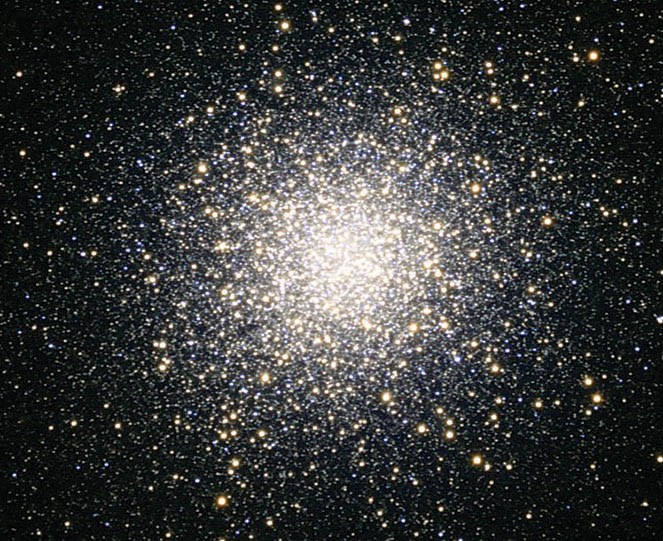The planetary alignment I mentioned for June is, according to one online source, the first alignment in order of all five naked-eye planets since 1864. The next occurrence is in 2040. According to Stellarium, the 1864 event was a morning alignment and in 2040 it will be in the evening. I missed the first one and it’s long odds I’ll be around for the next one, so I’m happy I got to see this one.
I noted in my June article two useful stars to guide observers – Arcturus and Spica. They’re along the extended curve of the handle of the Big Dipper asterism, Arcturus is about two “handle lengths” along the arc and Spica another two past Arcturus. Both are easy targets in the southwest after sunset and will be guides to our targets for this month.
Binoculars are normally referred to by their magnification and the size in millimeters of their objective (front) lenses, e.g. 7 x 35 or 10 x 50, etc. They normally also show the size of the field of view in degrees, which is very useful; you can estimate how far you move by seeing one star go across a full field of view. Starting from Arcturus look about 45 degrees left to the SE and a little higher to find the bright star Vega – the top right of the Summer Triangle. In between, from right to left, are two smaller asterisms – the semicircle of stars that mark Corona Borealis and a trapezoid of four stars that are part of Hercules. On the right (west) side of the Hercules trapezoid and about two thirds of the way up with binoculars you should see a small faint fuzzy ball. This is the globular cluster Messier 13, the brightest of its type in northern skies and discovered by Charles Messier in 1764. He was an enthusiast of comets and made a list of all the non-starlike objects he found that were not comets so he wouldn’t waste time on them twice.
Globular clusters are curious groups of stars, tightly bound by gravity and usually very old as evidenced by their low “metallicity” or abundance of elements heavier than helium. There are several hundred of these orbiting our galaxy but unlike the main galaxy they have almost no interstellar gas and dust left from which to form new stars.
Next look with binoculars about 10 degrees to the right of Arcturus (one fist width at arm’s length) back towards the bowl of the Big Dipper, you should be able to find another faint fuzzy ball of stars. This is the globular cluster known as Messier 3.
Messier 3 is well off the plane of our galaxy – 31.6 thousand light-years – and about 38.8 thousand light years from the center of the galaxy. It contains about half a million stars in a volume about 180 light-years in diameter and is estimated to be 11 billion years old.
If you next look about 20 degrees below Messier 3 and roughly equidistant from both Arcturus and Spica with steady hands or better yet, a tripod, you should be able to see some very faint, small, non-stellar objects. For these ones, averted vision – looking slightly to one side of the object – may allow the rod cells in your eyes to better pick up the faint light. There may be as many as 15 visible in a single field of view but one should remember that you’re working right at the limit of the binocular’s light-gathering capabilities. You need clear dark skies, well-adapted night vision and no moon. This area contains the Virgo cluster of galaxies, at least a thousand of them with a mix of spiral and elliptical galaxies. While our own galaxy may contain 100 to 200 billion stars, one of the Virgo galaxies – Messier 87 – is a giant elliptical galaxy and likely contains trillions of stars as a result of mergers with other galaxies. At its center is an immense black hole of approximately several billion solar masses; this was recently imaged by the Event Horizon Telescope collaboration and can be seen in the Astronomy Picture of the Day (APOD) archive for May 1, 2022. If all else fails and you can’t find any of these galaxies, the Andromeda galaxy rises in the NE at sunset and is visible all night. The right hand “V” of Cassiopeia points straight to it.
There will be no SCAC meetings until after the summer but the club will be at the July 1 festivities at Hackett Park with our booth set up and some solar telescopes available for public viewing.



